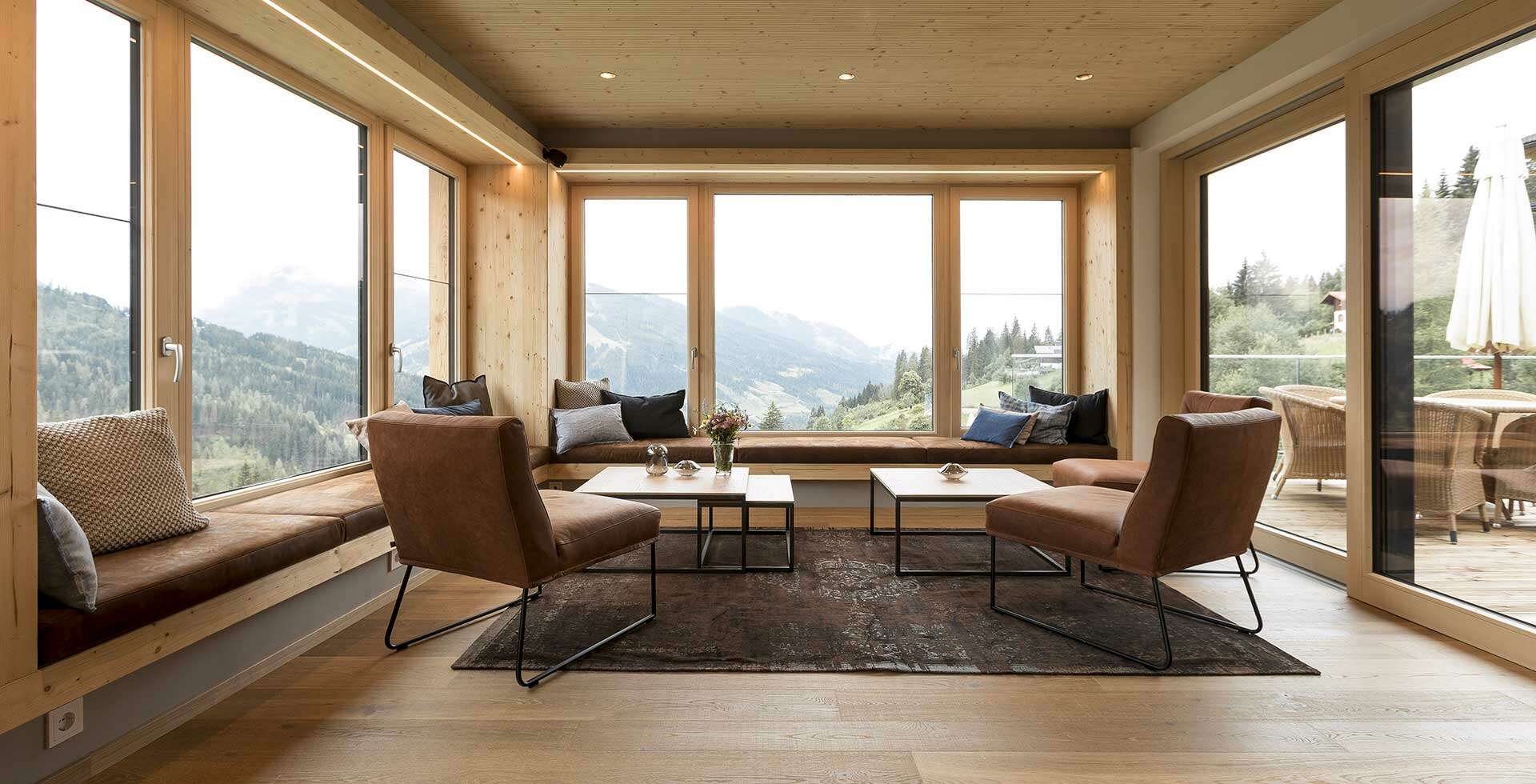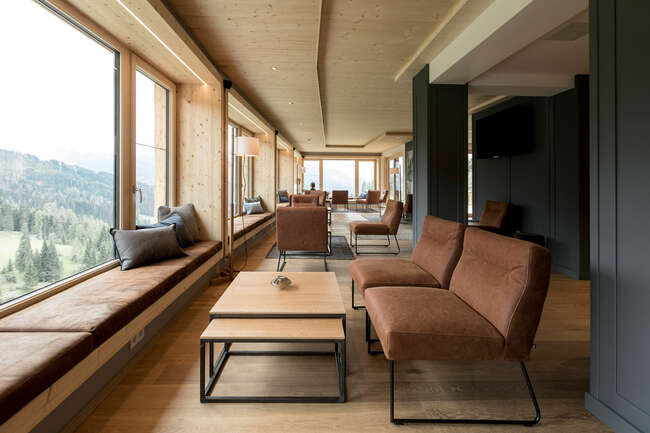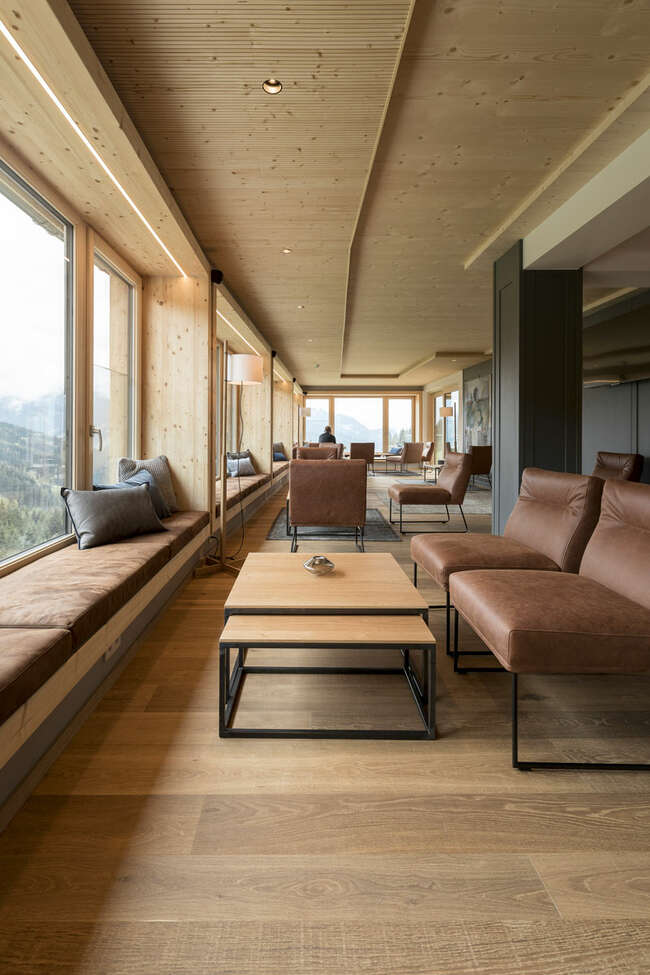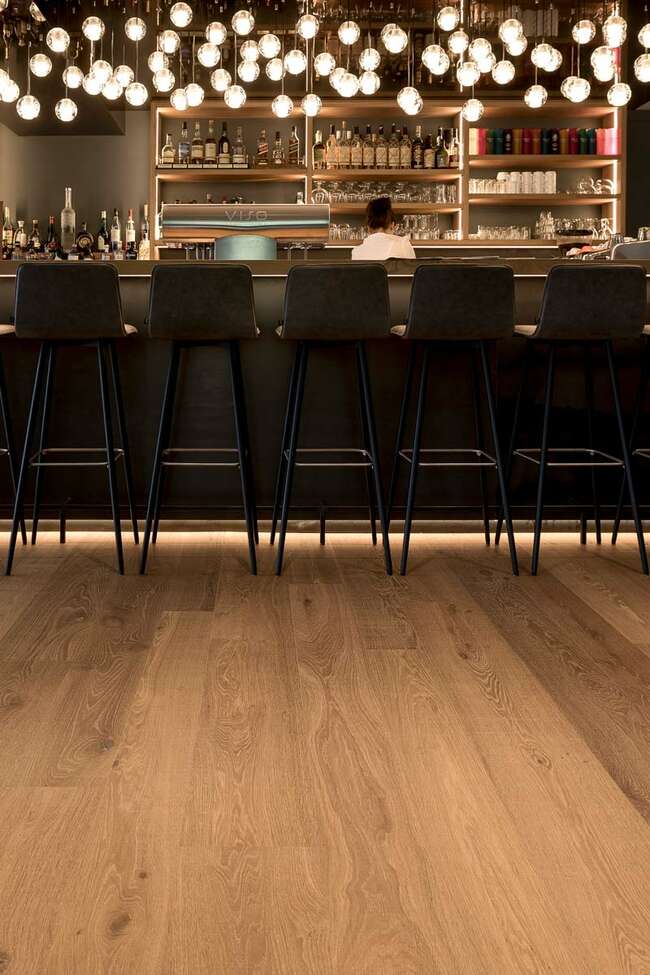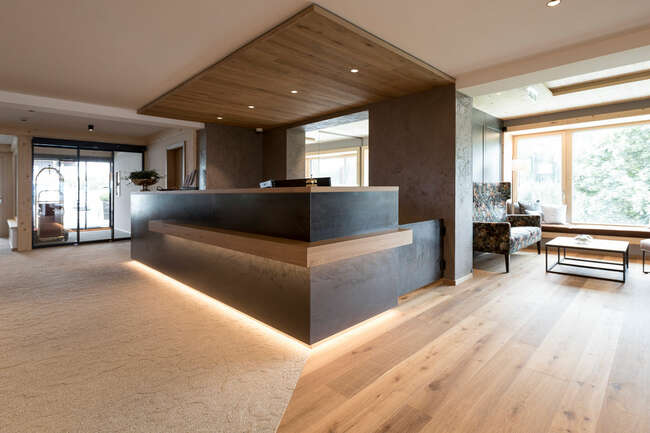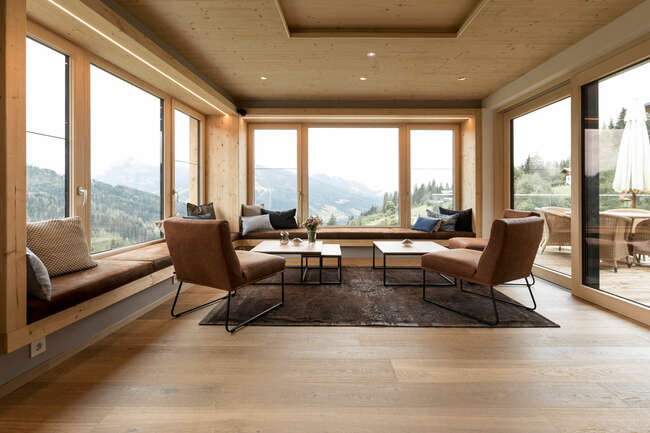How to treat wooden flooring?
Oil or varnish? Which is more durable?
These are some of the most frequently asked questions about wooden floors. You want to know whether to go for oil or so-called hard varnish.
And producers themselves don’t give any straight answers, either. Especially varnish manufacturers assign almost miraculous properties to their products, claiming that varnished finishes are easy to maintain and resistant to scratches. On the other hand, oiled wooden flooring is allegedly hard to clean, requires regular oil re-application and in particular is less durable.
So why do restaurants, hotels, shops and even airport halls – places whose interiors have to handle the hardest strain – use wooden flooring with an oil finish?
The essential and significant properties of wood include dimensional stability in relation to its surroundings and natural hardness. Oak, the most frequently used type of wood, has its durability determined by its innate structure, and its properties are not affected by finishing treatment. Brushing, cross-grain brushing and cross-sawing actually reinforce wood durability and even on its basic level give it a rustic style.
The key difference between varnished and oiled surfaces is that a varnished finish is a layer of synthetic materials applied to the top of the wood.
On the contrary, with oxidative oil surface treatment the wood soaks the oil layer in.
The advantage is that this kind of wooden surface is much warmer compared to varnished finishes. However, much more importantly, the surface remains open, letting the wood breathe freely. In other words, major as well as minor scratches and other damage become practically invisible when the oil layer is re-applied. This also gives oil surfaces a natural patina of age and beauty over time. In contrast, a varnished surface is a closed layer. Each scratch disturbs its integrity, turning black after a couple of washes. In a few years‘ time the damage becomes radically more apparent. Renovation work cannot be done locally and the surface needs to be sanded. This not only comes at a high cost but also removes the structure and colouring, with the price often being so high that many choose to replace the entire floor, even if it’s just several years old.
Repairing an oiled surface is much easier and can be done locally, simply by washing, degreasing and applying new oil, with the surface structure and the height of the wear layer remaining fully preserved.
These are the reasons why oiled floor finishes are used at places subject to extreme loads, and they do their job absolutely reliably in kitchens, hallways and living rooms in houses and flats.
I hope that, armed with this knowledge, the decision as to how to maintain your new floor will be plain sailing.
back to list


